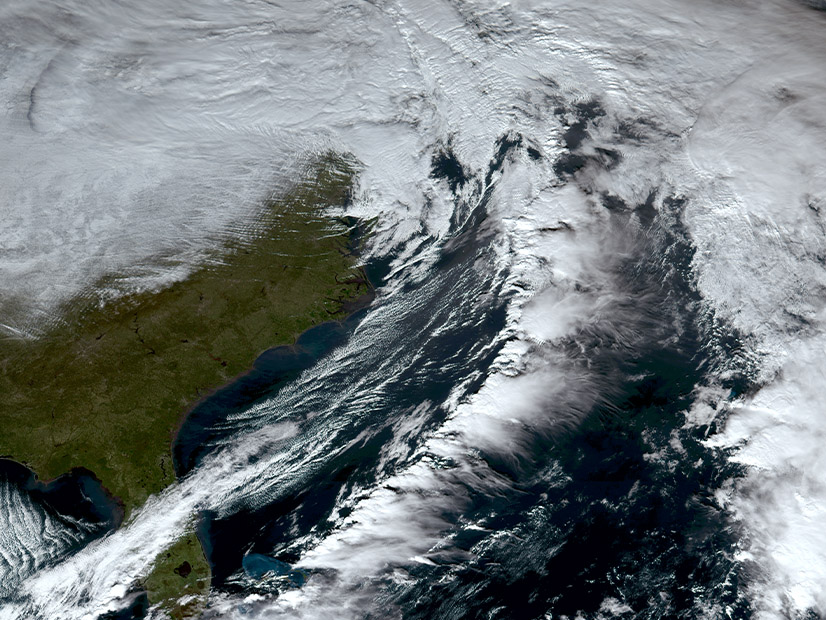MISO and the Tennessee Valley Authority hope to implement an emergency energy purchase framework by Christmas Eve.
The two have filed an agreement before FERC for permission to be able to transact energy with one another during emergencies by Dec. 24 (ER25-197).
MISO and TVA have never had an agreement to mutually supply the other with emergency power, and they said they traditionally had “other arrangements” that seemed sufficient to meet the needs of their regions.
However, the two said the late December 2022 winter storm changed their views.
“Due to the changing configuration of the grid and recent emergency events, like Winter Storm Elliott, MISO and TVA have become increasingly focused on the need for additional coordination and planning to better ensure reliability in an emergency,” MISO Managing Senior Corporate Counsel Amy Thurmond wrote to FERC in a transmittal letter. “To that end, each has identified the need to purchase emergency energy from the other to maintain the reliability of each individual transmission system and, more generally, the integrity of the Eastern Interconnection.”
MISO and TVA have contemplated an agreement since MISO supplied up to 5 GW at times during the storm Dec. 23, 2022, to the Tennessee Valley Authority, SPP, Associated Electric Cooperative Inc. and the Southeast planning region. MISO’s exports that day played a role in forcing its own maximum generation event. After, MISO leadership lamented that though MISO could assist TVA during dire straits, TVA was prohibited from returning the favor when MISO encountered precarious operations. (See MISO, TVA to Enter Agreement on Emergency Purchases and MISO Defends Energy Exports During December Storm.)
TVA’s ability to provide power to parties outside of its service territory is limited by the TVA Act. The federal utility can supply power only to parties that held exchange power arrangements as of July 1, 1957, and their successors. TVA for years interpreted the TVA Act as a barricade to selling power directly to MISO.
MISO is less restricted in the balancing authorities it can sell to or purchase emergency energy from. The RTO’s tariff requires only that there be an agreement between MISO and another BA.
MISO noted that two of TVA’s neighboring electric systems included in the 1957 agreement — Ameren and Entergy — joined MISO years ago. MISO and TVA share a seam in Mississippi and along the Arkansas-Tennessee state line.
Ameren and Entergy as Avenues for Trade
The freshly filed agreement involves Ameren and Entergy granting authority to MISO to act on their behalf to buy emergency energy from TVA. MISO said the emergency energy it coordinates and directs from TVA on behalf of Entergy and Ameren would be used for the “sole purpose of maintaining electric reliability.”
Terms of the agreement stipulate that TVA and MISO can share power up to the transfer limits in use between the two when one is experiencing an emergency. The two said supply to the other shouldn’t come at the expense of the “safe and proper operation” of their own transmission systems and service to their own customers and shouldn’t impede obligations they might have with other parties.
MISO and TVA said one or the other should be experiencing a NERC-defined Energy Emergency Alert Level 2 before an offer to supply emergency energy can be made. Offers would be recallable up to 10 minutes ahead of time, and MISO and TVA said they would make efforts to ensure that an emergency energy transaction “continues only until it can be replaced by a commercial transaction.” All emergency energy transactions would be metered and billed based on scheduled deliveries. Emergency energy charges from the delivering BA to the receiving BA would be calculated based on a two-part formula that includes an energy portion and any transmission charges to an agreed-upon delivery point.
When MISO was the delivering BA, the rate per megawatt hour would be either 150% of the hourly locational marginal price at the buses near the point of exit, 110% of the verifiable cost of the resources used to supply the power or $100/MWh, whichever is greater. When TVA was delivering megawatts, the rate similarly would be the greatest of either 150% of the hourly LMP at the points of injection in either the Ameren or Entergy service territory, 110% of the verifiable cost of the resources used to supply the power or $100/MWh.
MISO and TVA plan to use an invoice system with rules that allow one or the other to collect interest on delinquent payments or raise billing disputes. MISO added that though it would be sourcing emergency energy on behalf of Ameren and Entergy, under no circumstances would the two members be liable for the RTO’s obligations under the agreement.



